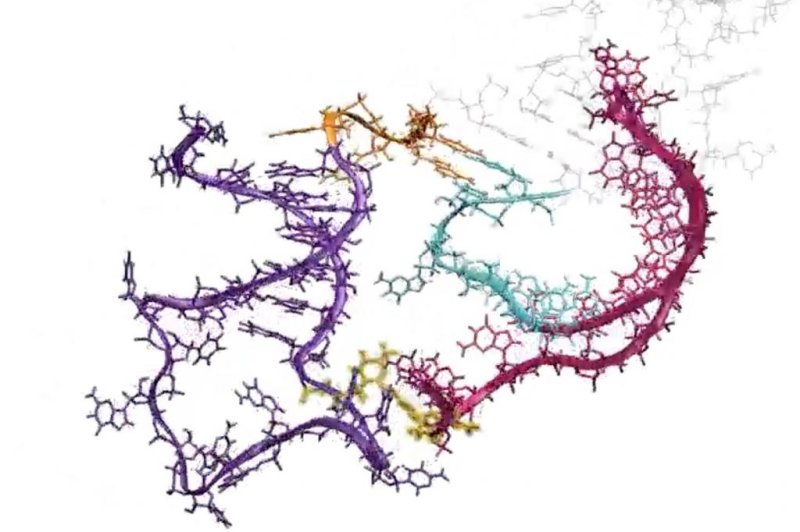Scientists have created new detailed videos of RNA molecules folding themselves as they are synthesized. Photo by Northwestern University
Jan. 15 (UPI) -- Using data from RNA-folding experiments, scientists have created new high-resolution, slow-motion videos illuminating the ways RNA molecules contort themselves to squeeze inside cells.
The research, published Friday in the journal Molecular Cell, promises to help scientists better understand and development treatments for RNA-related diseases.
"RNA folding is a dynamic process that is fundamental for life," lead study author Julius B. Lucks said in a news release.
"RNA is a really important piece of diagnostic and therapeutic design. The more we know about RNA folding and complexities, the better we can design treatments," said Lucks, a synthetic biologist at Northwestern University.
The data-driven movies allowed researchers to observe RNA folding in slow-motion, revealing subtleties that would have otherwise remained invisible.
Scientists noted that strands of RNA molecules tie themselves into knots before untying themselves in order to achieve their ultimate shape.
"Folding takes place in your body more than 10 quadrillion times a second," Lucks said. "It happens every single time a gene is expressed in a cell, yet we know so little about it. Our movies allow us to finally watch folding happen for the first time."
Scientists have previously generated RNA-folding animations, but the videos relied on a plethora of approximations, preventing scientists from observations some of the more surprising and subtle folding techniques deployed by RNA.
To create the new videos, scientists developed new computer models to acquire and analyze RNA-folding data in real-time. By analyzing the folding process as RNA is synthesized, models were able to pick up on new details and idiosyncrasies.
"The information that we give the algorithms helps the computer models correct themselves," Lucks said. "The model makes accurate simulations that are consistent with the data."
Scientists used their new data analysis strategy to animate the folding of an RNA called SRP, a common form of RNA characterized by a hairpin shape.
As the videos revealed, the RNA ties itself into a knot before untying itself, flipping itself over, and assuming its unique shape.
Researchers dubbed the folding process "toehold mediated strand displacement."
"To the best of our knowledge, this has never been seen in nature," Lucks said. "We think the RNA has evolved to untie itself from knots because if knots persist, it can render the RNA nonfunctional. The structure is so essential to life that it had to evolve to find a way to get out of a knot."















